Warren Gardens Wildlife Haven

Habitats & Heritage are working in collaboration with local residents Nikki Clapp and Colin Mitchell to transform a neglected area of Twickenham Riverside into a visually attractive, biodiversity hotspot. Through planting, the removal of invasive species and the creation of key habitats, The Haven will provide a welcoming space for residents, wildlife and pedestrians alike. We would like to thank Richmond Council, volunteers and the local benefactors who have all contributed to the success of this project so far.
Check out our blog below, where you can read about work on the project to date.

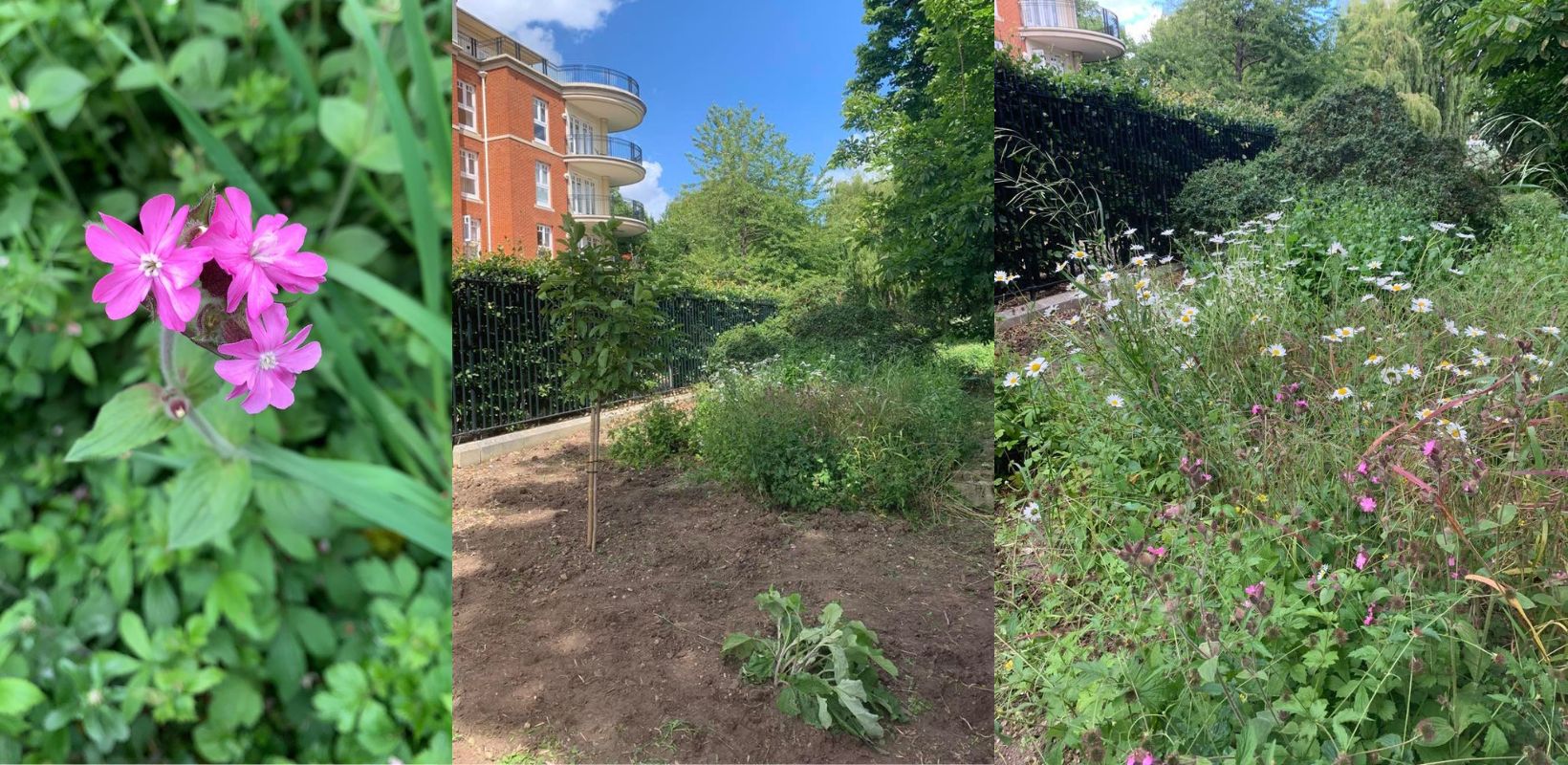 7th May 2022
7th May 2022
The project kicked off in the sunflower garden, clearing away species (mainly nettles) that would otherwise compete with the wildflowers planned to be planted. Left behind was a patch of pollinator and caterpillar-friendly species, as well as the magnolia tree planted previously by a local resident.

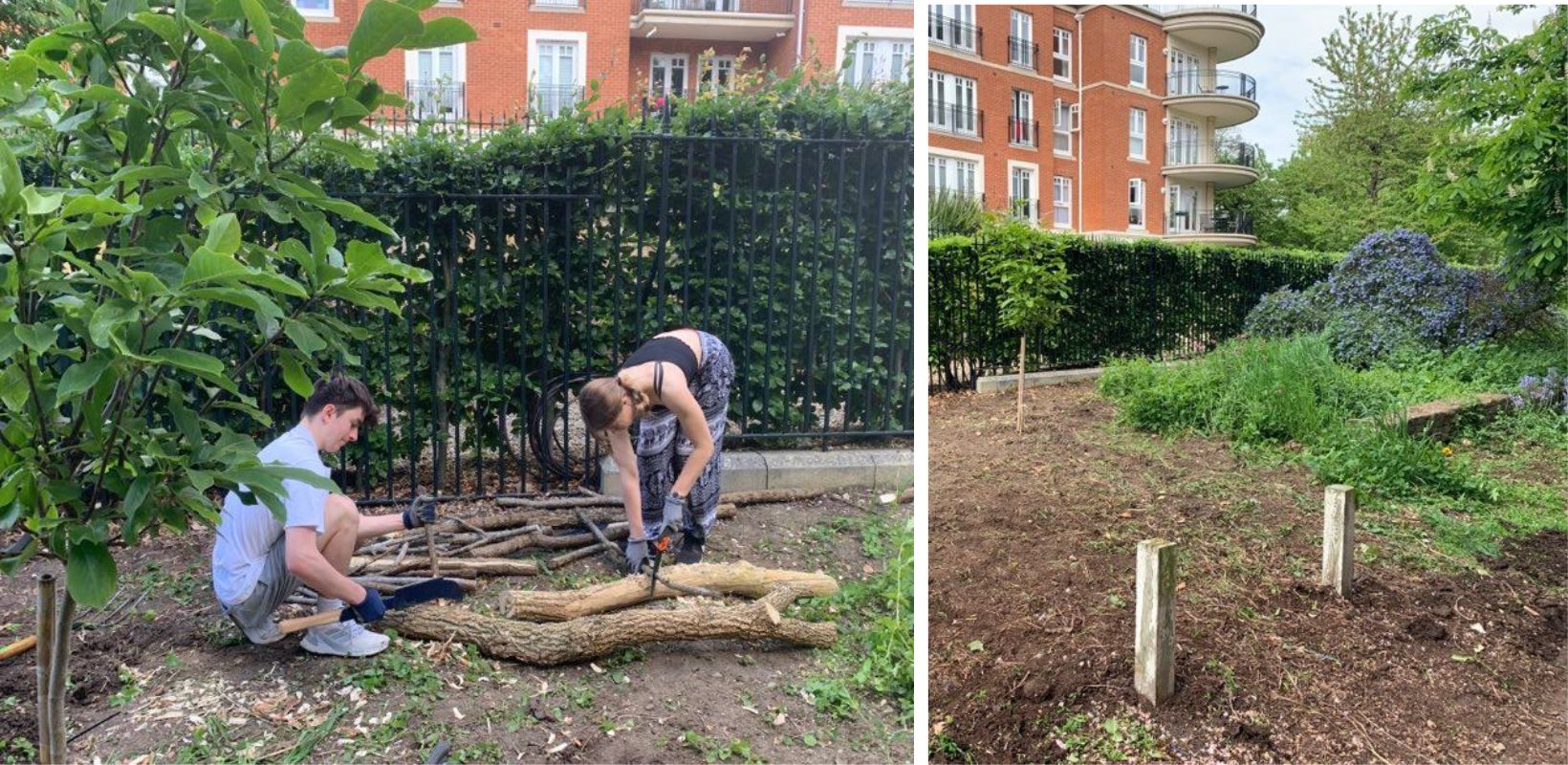 11th June 2022
11th June 2022
We returned the following month to re-clear the area where ‘running’ species (such as nettle and bindweed) had regrown. These species can be difficult to eliminate, but with perseverance the volunteers managed to remove the bulk. The stakes for the dead hedge were soured locally and sustainably, giving the volunteers a chance to practice their skills using saws and bill hooks. These tools were used to create a pencil-like pointed edge in the stakes, ready for hammering into the ground.

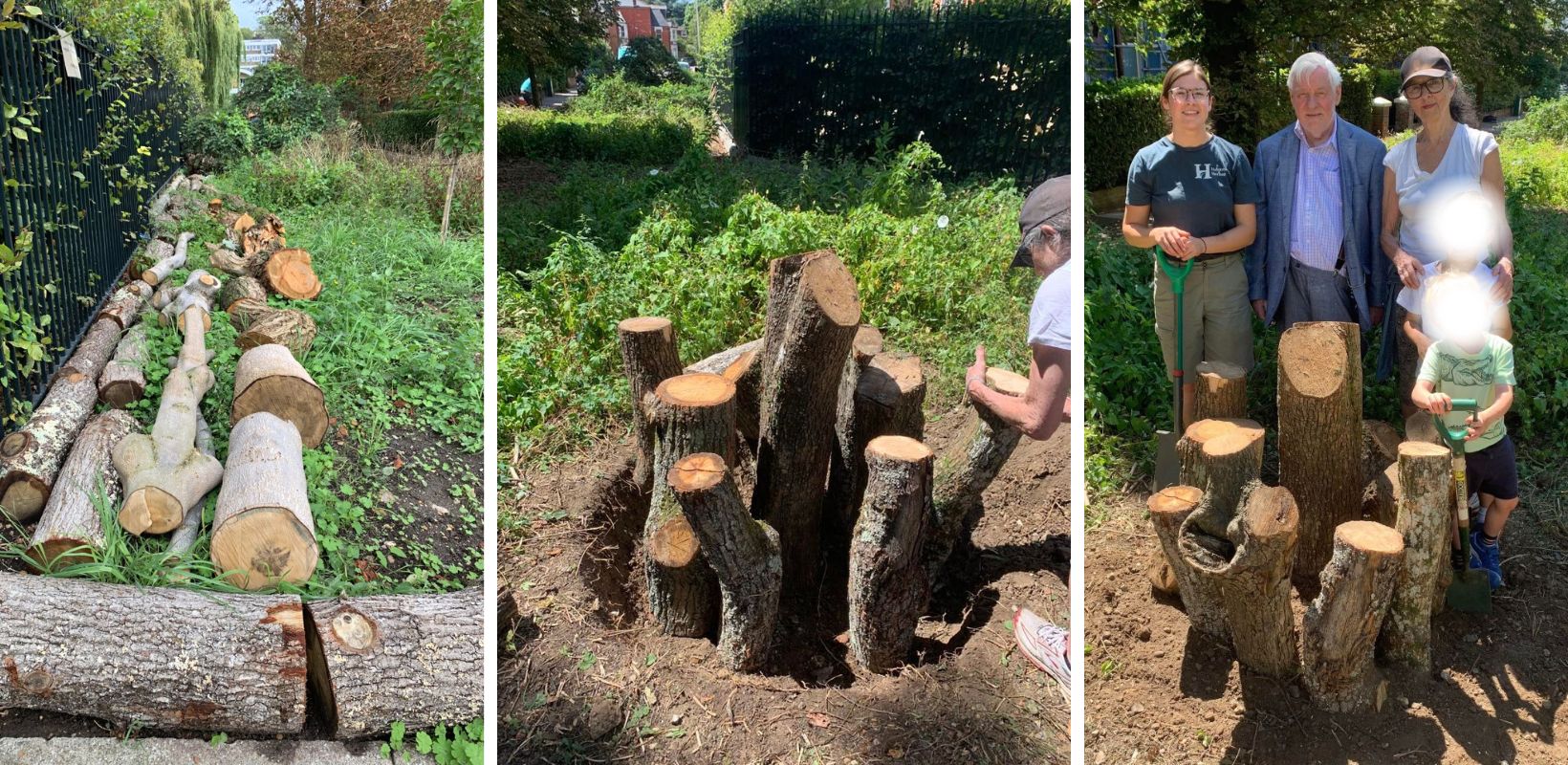 9th July 2022
9th July 2022
More local logs were delivered to the site. Volunteers then undertook the strenuous task of digging into the soil and rubble, much of which remains from the Pelabon WWI Munitions Factory (later known as the Richmond Ice Rink). A local artist and resident used her skilful eye to artistically place the logs in the pit, using the soil to re-fill and secure them. The stag beetle loggery sits within the Wild Garden, and so nettles will be allowed to re-grow around them, to retain moisture and prevent footfall from compacting the soil.

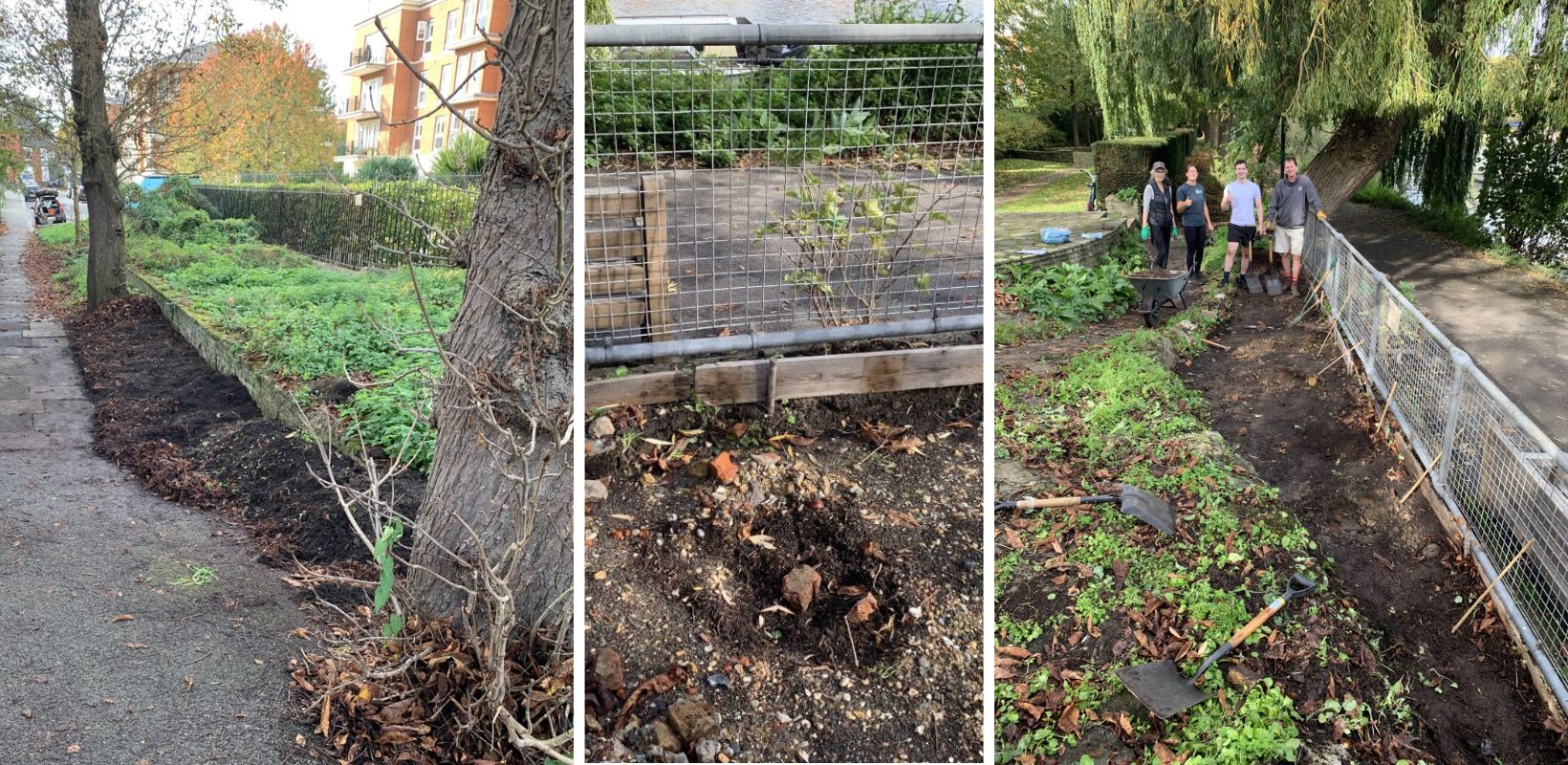 22nd October 2022
22nd October 2022
A huge amount of work was undertaken during the fourth session to prepare the rose garden for planting in the winter. The left picture shows the build-up of soil that has occurred on the pathway over time from the accumulation leaf litter from the surrounding chestnut trees. Once weeded, the soil was destined for the rose garden in order to fill the bed by an extra 0.5 metres. Before starting works on the rose garden, there was little soil for the roots to establish. We therefore created a barrier using recycled wood to prevent soil from spilling onto the towpath and to increase the total soil capacity of the planting bed.

 5th November 2022
5th November 2022
Session 5 was the biggest and busiest volunteer day to date. 17 volunteers made up the group, from Duke of Edinburgh students to residents and local councillors. Due to a generous donation from a local resident, we were able to purchase some untreated oak railways sleepers which have been used to border the rose garden and increase its soil capacity further. It was all hands on deck as everyone shovelled soil from the path into wheelbarrows, with the nutrient-rich earth destined for filling the rose bed.
Trenches were dug along the entire border of the site in which we placed our logs. By moving the soil from the path to the rose garden and using logs to border the path, we have been able to increase the total soil storage capacity across the site for future generations to come. Over time, the logs will also provide deadwood habitat for a range of invertebrates. Volunteers finished the session with some winter planting.

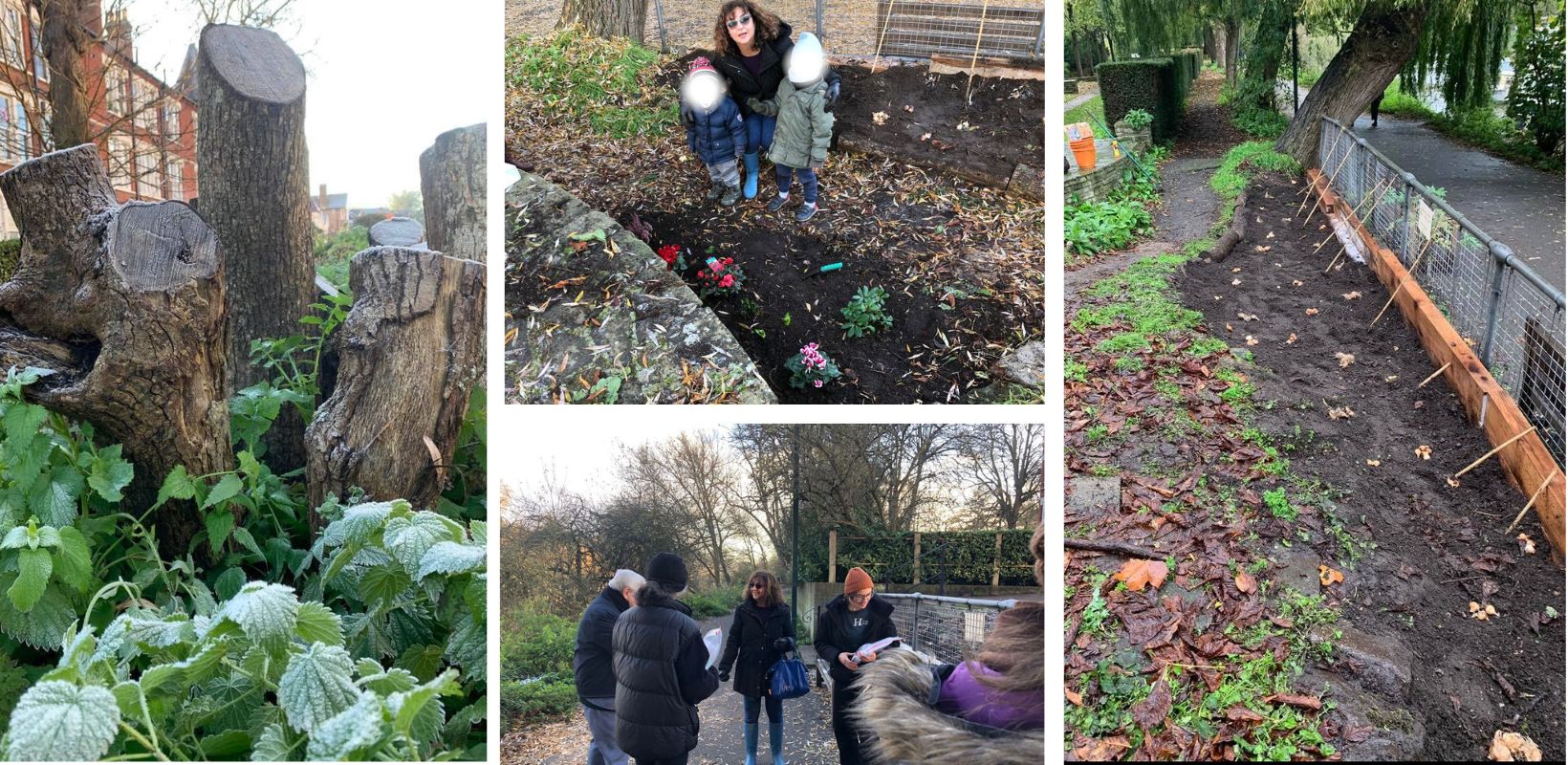 10th December 2022
10th December 2022
For our last session of 2022 we planted the remainder of our bulbs, roses and shrubs. Luckily all work was completed before the snow fell later that week! We were looking forward to seeing the fruits of our labour in spring and summer, and hoped that the planting done in the rose garden would make a worthy frame for the memorial benches in front.